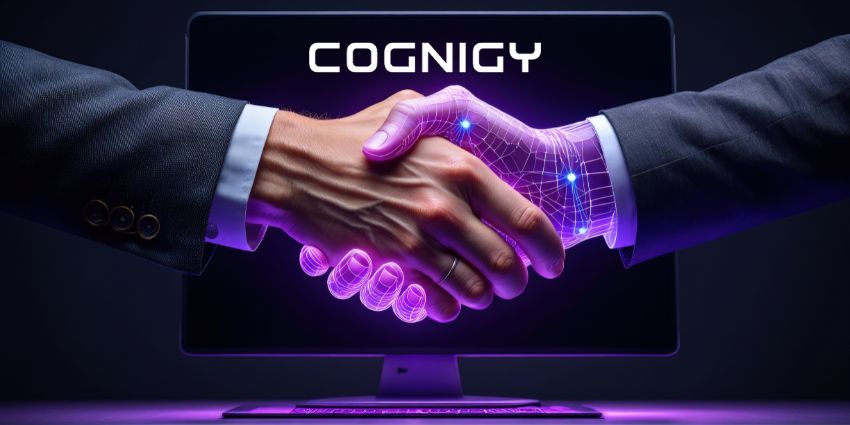In the past decade, contact centers have witnessed the rise of omnichannel, virtual assistants, and even the beginnings of the metaverse.
The increasing adoption of new technologies and the rise of CX-driven disruptors are increasing the expectations of modern, digital-native customers eager to resolve issues in as few interactions as possible.
In the past two years, agents have moved to remote work in significant numbers, making cloud platforms more critical than ever. As such, many operations now enjoy easier technology integrations, making it easier to embed innovations into the contact center ecosystem.
As these new realities converge, it is fascinating to consider what lies next in the evolution of contact center technology and the future of CX? Here are the top ten trends to watch.
1. Self-Service By Default
Self-service will no longer target only simple, transactional queries. Instead, it will become the default method for query resolution, replacing a large volume of inbound calls.
The customers who still choose to reach out to contact centers will likely bring more complex problems that need human intervention, necessitating a culture change as contact centers learn to deal with problematic callers regularly.
2. Conversational AI and Conversational Intelligence
Conversational AI refers to the use of AI-powered chatbots and voicebots. These technologies automate a large portion of the query resolution, especially for common issues and FAQs. As with self-service solutions, conversational AI can also help complete simple tasks like order cancellation through an intuitive chat flow.
Meanwhile, conversational intelligence applies advanced analytics techniques to text and voice conversations, uncovering hidden data. Both contact center technologies will gain from advancements in data processing.
3. The “Mainstreamization” of Contact Center as a Service (CCaaS)
Gartner has already recognized Contact Center as a Service (CCaaS) as an essential technology segment for enterprises with its addition of the technology into its Magic Quadrant program.
It will be the mainstream solution for any company looking to adopt contact center systems in the future. After all, CCaaS supports flexible, pay-as-you-go implementations with a near-zero hardware footprint, ideal for both small companies and remote work environments.
4. The Birth of XCaaS
Even as CCaaS replaces legacy cloud technologies, another new trend will slowly redefine the future of CX: Experience Communications as a Service (XCaaS). It bundles CCaaS and Unified Communications as a Service (UCaaS) into a single solution so that operations can manage both internal and external communication with one license.
While this was previously done on an ad-hoc or DIY basis, providers like Webex, RingCentral, and Avaya have started to offer pre-configured XCaaS platforms. Meanwhile, other prominent CCaaS vendors have announced Microsoft Teams integrations, and leading UCaaS provider Zoom has launched its own CCaaS platform.
5. IVR Turns Into Intelligent Bots
IVR is one of the oldest contact center technologies still in use. But, the software is evolving. As McKinsey & Company states: ““IVR systems are evolving from dumb menu systems into smart ‘voicebots’ capable of handling complex customer queries.” These voicebots will not only route customers, but we will also see software used more for self-service, supporting customers that contact the business via smart speakers and smart displays.
Discover more about this exciting contact center technology trend by reading our article: The Future of Voicebots: Much More Than an IVR Alternative.
6. New RPA Use Cases
Contact centers primarily implement robotic process automation (RPA) to look after the small but iterative and mundane tasks that occupy so much of an agent’s time. Indeed, RPA bots can copy-paste data between systems, launch applications, and even auto-generate post-call summaries to make agents’ lives easier.
The technology is also often embedded in other contact center solutions to enhance efficiency. For example, it enables personalized self-service by fetching customer information from the CRM, purchase ordering system, and other contact center technologies. Such a trend will likely accelerate in the coming years.
7. Automated Coaches for Remote Agents
As several contact center teams continue with a remote or hybrid model, it is crucial to provide remote assistance and coaching, even when the supervisor is not there.
Automated coaches address this need by learning from patterns in how agents handle contacts to highlight unique opportunities for improvement. These tools use data generated by CCaaS tools to spot trends and make recommendations.
8. The Maturing of Prescriptive AI
Typically, three types of analytics are available in an organization – historical, real-time, and predictive. We are gradually seeing the rise of a fourth, AI-powered type of analytics, which is prescriptive.
Not only does it analyze past and real-time data to discover insights, but it also generates natural language recommendations for the agent or supervisor. Such insights are actionable, enabling the contact center to address areas of concern more quickly.
9. The Rise of Hyper-Personalization
Hyper-personalization unites real-time customer data with AI to generate insights. Companies can harness these insights for strategic individualization through a system or human intervention, making customer journeys unique and personal.
For example, by monitoring the sentiment of an individual in real-time, the contact center can trigger a discount offer to a customer when they are unhappy, and their business is at risk. Alternatively, the contact center can add that customer to an outbound dialing list for a more personal touch, so a human proactively makes amends.
10. New Customer Satisfaction Scoring Models
Customer satisfaction (CSAT) and the Net Promoter Score (NPS) are the conventional scoring models many companies use to measure CX from customers’ perspectives.
While these will continue to be relevant in the future, contact centers will rely on more holistic and connected scoring methods. Instead of annual surveys and transaction-based feedback gathering, they will use customer experience management (CXM) platforms to embed data gathering at critical junctures within the customer journey. Also, this will make the feedback process less intrusive for customers.
Final Thoughts
With in-person access restricted during the pandemic, customers have come to rely on contact centers more than ever before.
Indeed, a 2021 ICMI report found that eight in every ten contact centers plan to increase their capacity in 2022, and 51 percent plan to raise salaries.
Many companies will likely leverage the contact center trends and technologies above to improve CX and drive business growth alongside these strategic staffing decisions.
Find out how to build toward the future contact center by watching our video: Delivering the Digital Contact Centre of the Future







